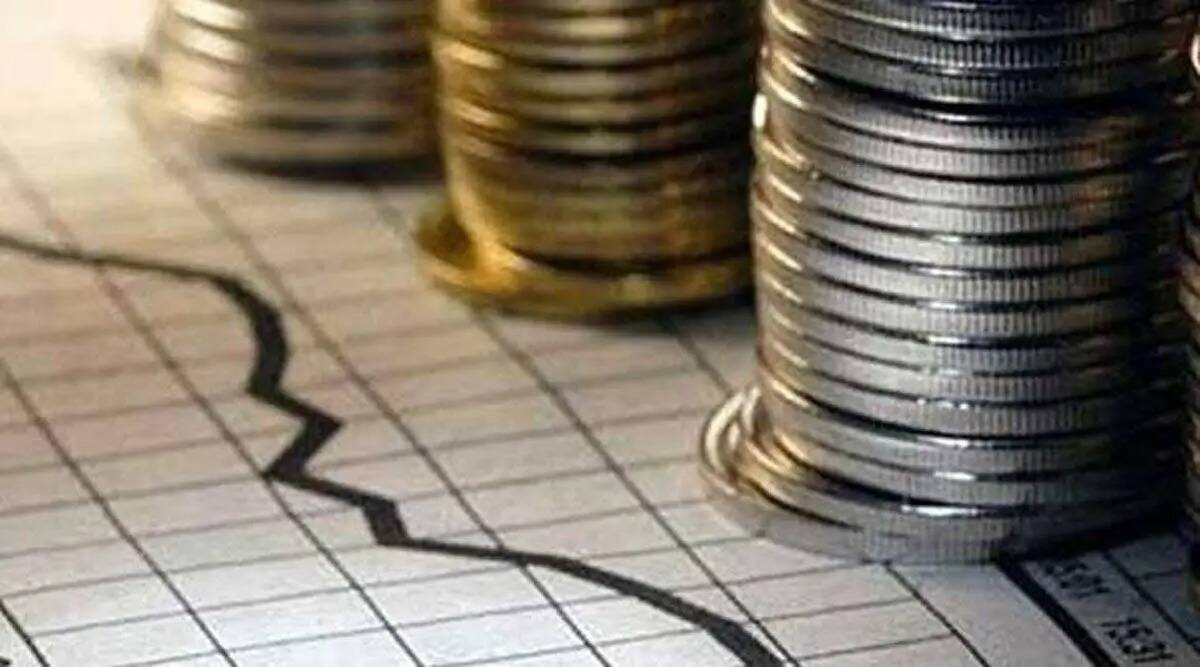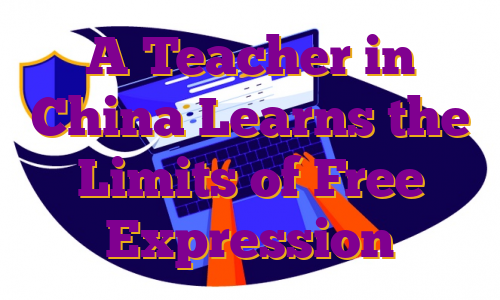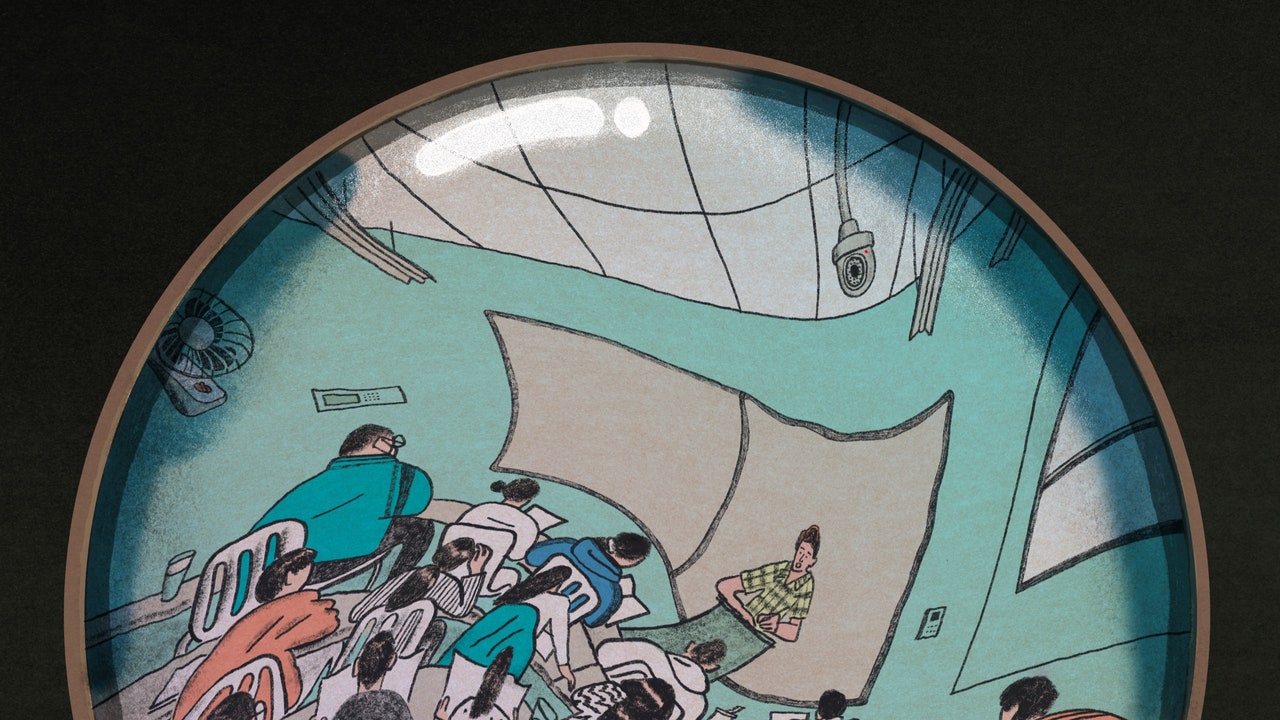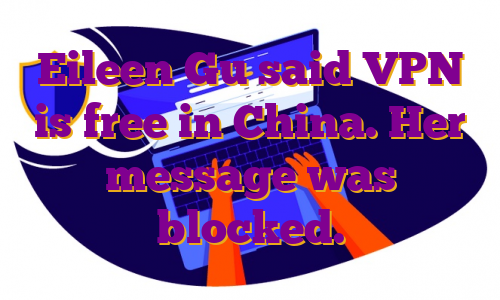Libra had the advantage of Facebook’s nearly 3 billion monthly users, as well as Meta’s other apps like Instagram and WhatsApp. But that scale worked to the tech giant’s disadvantage. It was steadily forced to trim back its plans and lessen its involvement in what morphed from Libra into a consortium called the Diem Association. Last month, Diem announced that it was selling its assets to a small financial services company called Silvergate.Silvergate CEO Alan Lane said a critical turning point for Diem was the November release of a Treasury Department report that effectively endorsed stablecoins — so long as they were not affiliated with “commercial enterprises.”“Some people have said if you read the [President’s Working Group] report, anywhere where it says ‘commercial enterprises,’ you can just insert ‘Facebook,’” Lane told Protocol. In an interview with Protocol, Lane explained how the midsized bank with $16 billion in assets and a market cap of roughly $3.7 billion ended up taking over one of the biggest crypto projects in tech, and how it’s eyeing a big role in the event that the federal government decides to roll out an official digital U.S. dollar. He also confirmed that “Diem” is pretty much dead: The stablecoin will go out under a different name.This interview has been edited for brevity and clarity.How did Silvergate become involved in Diem and the Facebook crypto project?Prior to any relationship with Diem, we were already active in the stablecoin space because we bank all of the major cryptocurrency players in the United States. We started having conversations with Diem in late 2020, probably in the third or fourth quarter of 2020. They were already pretty far down the path working with other banks.But it turned out that even though they had been working with some other banks for a while — and we don’t know who those banks were, we just know they were large banks, much larger than us — they hadn’t made a lot of progress. Literally, a year ago in February of 2021, we were working on a technology sprint with them around the potential to mint the stablecoin using our platform. The feedback we got in late February was, “You guys at Silvergate just accomplished in 11 days what we couldn’t get accomplished in 11 months with these other banks that we’re working with.” That was a pivotal moment in essentially us moving to the front of the line, if you will, in terms of Diem feeling like, “You know, maybe we should be partnering with Silvergate as the issuer.” What were you able to do in 11 days that other banks weren’t able to do in 11 months?I honestly don’t know, because I don’t know what they were trying to accomplish with the others and what roadblocks they were having. But because we had already done a lot of thinking about how we would issue our own stablecoin and we already had the API and the technology around minting and burning, having worked with the other stablecoin issuers, we just took it in stride and said, “Well, yeah, OK, this is what we’re going to do. This is how we’re going to do it.”I think their eyes were open, that, “Hey, wait a second. Here’s a bank that already knows how to do this.” I’m putting words in their mouths.We were working behind the scenes in March, April, May and then we made the announcement in May that we were going to be the exclusive issuer. They were going to be running the payment network. They were going to be running the blockchain because Diem owns the blockchain and they had this association. So they had all these other members that were running nodes on the blockchain, and we were just going to be issuing the stablecoin.Then, just months later, things changed. What happened?We remained engaged with the regulatory agencies and we got to the point in late June, early July, where we felt that we were ready to go. We felt we were ready to essentially take it to the next step. But in our conversations with the regulators, they shared with us that there was this President’s Working Group that was going to be reconvening to discuss how stablecoins should be regulated.And Ben, I’ve been in banking for 40 years. I know that if the regulators say that regulations are coming and that they’re imminent, the last thing we want to do is launch something before that comes out. Because what if there’s a feature that we’ve put in there that runs afoul of their guidance, right? As frustrating as it was, we decided we’re gonna have to wait until this report comes out. Fast forward to November. The report comes out. And what it said was that the President’s Working Group suggests that Congress actually adopt legislation, but absent that, the existing regulators will use their own regulatory authority to regulate these things. But embedded in that there was a strong preference for stablecoins to be issued by banks. The term that they use is “insured depository institutions,” which are essentially banks. Once that report was issued, it gave us confidence to say we no longer need to argue about permissibility — not that we were arguing — but we no longer needed to make the case because they had essentially said, “Yep, these things exist out there. We prefer that they be issued by banks.”So now the only question was, can we get back and engage with Diem? But Diem was reading the same report and one of the things in that report was a reference to commercial enterprises. There was a caution about stablecoins being issued with affiliation with commercial enterprises. We were going to be the issuer. But Diem was originally going to run the protocol. And what the President’s Working Group report was saying was, “Wait a second. We don’t want these big tech companies running these payment networks.”So we started to re-engage with Diem in November. And they told us, “We’re considering our strategic alternatives because we know we’re not a bank. We’re reading the same report you’re reading, and we don’t think we can proceed under the way we were doing it before. We need to consider options.” That’s how we ended up entering into an agreement with them to buy the technology so that we could actually run the network. We intend to still be the issuer, but it’ll be our own stablecoin that we will run on the Diem-created blockchain. We’ll probably rename it. We’re not going to continue to have that legacy Diem name. I’ve talked to people in the industry who cite a growing fear of big tech companies moving into the finance world. Are you able to offer some insight into that and how that played into the way this unraveled as a Facebook project?You can think about three separate components or activities around the original Libra project. With Libra, which was announced in 2019, you had one entity, Facebook, that was going to be doing three things. They were going to build the protocol. They were going to issue the stablecoin. They’re going to run it after they build it. And then they were going to use it for their billions of users. So think about this as Big Tech, they’re going to build this payment system. They’re going to run it. They’re going to own it. I think there was a lot of concern.Keep in mind that the original vision was that this was not just a U.S. dollar-backed stablecoin. It was going to be pegged to a basket of currencies, which was going to include the U.S. dollar and the euro and [other] currencies. So that brought attention not only from the U.S. regulators, but [also] from the European Union. Everybody was up in arms about this.So let’s think about the evolution of what they did. The first thing they did was they said, “OK, you know what, we’re not going to run this ourselves.” So they created the Libra Association. The Libra Association was now going to run the protocol. And they were also going to initially be the issuer, but it wasn’t just going to be Facebook that used it. It was also going to be members of the association. You may recall that early on, everybody joined the association: Visa, Mastercard. Then slowly, as things went on, some of them started saying, “Oh, you know, now we’re going to leave.”All of this was the evolution of Facebook essentially trying to distance themselves from it. And so when they created the association, they created this board of which they only have one vote. But it was still a Facebook project.When we got involved, there was an attempt for a further differentiation because now what you had was an association, but Silvergate was the issuer. Diem as the tech company was still going to be the one running the protocol. Some people have said if you read the [President’s Working Group] report, anywhere where it says “commercial enterprises,” you can just insert “Facebook.” Or, probably a fairer thing to say so we’re not just picking on Facebook, is to say just read “Big Tech.” You could put “Google,” “Amazon,” “Apple,” whoever you want. The regulators don’t want Big Tech running a payment network. And I think Diem probably came to that conclusion. That’s why they decided to sell the technology.I don’t think we are precluded from working with these retail platforms because they’re already using Visa, Mastercard, etc. So this will just be another payment option. But importantly, from the banking regulatory perspective, it’ll be inside the banking system, and it won’t be outside the system.Facebook wanted to create this because it wanted to take advantage of its massive user base. What will happen with Silvergate now in charge?We still believe in the vision. If we step back for just a second, the real promise here is that you can have a tokenized dollar that can move around the globe essentially instantly 24 hours a day, seven days a week. And that settlement is essentially final.If you and I want to send money, maybe you use Zelle, you transfer money via ACH. They certainly do a debit to your account right away, but the money hasn’t really left the bank. It’s a pretty clunky process that works for us here in the U.S. and other First World countries because we have access to these systems. But it doesn’t work all around the world. And even when it works for us, there’s a lot of back-end stuff that has to happen, especially on nights and weekends, versus just having a tokenized dollar that just moves over the internet. To get to your question, we believe that every digital retail platform will want to use this technology because it will be more efficient for them and for their customers and for their users. Ultimately, once you’ve put $1 into the system, if everybody is connected, then there’s no reason why I can’t take $1 that’s in my Starbucks app and transfer it over to Uber so that I can use it to pay for a ride, because there will be this rail that exists and a dollar is a dollar. That’s the vision.The Fed also just put out a report on possibly introducing a U.S. digital dollar and is soliciting opinions. How would that affect your project?So, full disclosure, I’m on the advisory board of The Digital Dollar Project. The vision there is for a CBDC that would be a public-private partnership. The pitch is that, “Hey, any time there’s been something really transformational, that needs both public policy and technology, that’s usually done in partnership between government and the private sector.” One of the things they often use as an example is the space program.I believe that if there is a CBDC, it will likely be something like The Digital Dollar Project which would be done together between the U.S. government and private enterprise and, most likely, banks. If that happens, Silvergate is still in a really good spot to be a major player in that, and even more so now that we purchased the Diem technology.Diem is purpose-built for payments and it has all the regulatory compliance features built into it. So if and when the federal government wants to move faster on the CBDC, we might actually be able to help.As one of the issuers?That’s all to be determined. I wouldn’t want to speculate.There’s a debate on whether the Federal Reserve will be the one issuing the CBDC, the way they did it in China, or if it would have to be with the private sector.I would hope that they wouldn’t go the way that China has done it in terms of the Fed trying to be the issuer themselves, but rather that they would maintain the two-tier banking system and still want to work through community banks. As to whether or not there would be one or more issuers, all of that is TBD.There are also concerns related to privacy. What are your thoughts on the debate between a token-based or an account-based digital dollar?I feel pretty strongly that, if there is going to be a CBDC, that it should be token-based rather than account-based. We should try to instill features that protect privacy. If I go to the bank and withdraw $100 from an ATM, and I go use $20 to buy something, you know, at the store, nobody needs to know who I am and I’m not doing anything illegal or immoral or unethical. Why do we need to have every transaction be identified? That doesn’t currently exist with physical currency and I think we should try to maintain that with digital currency as well.Can you share what names you’re considering to replace Diem?[Laughs] No. Everybody immediately said, because our name is Silvergate, “Oh, you should call it the Silver Dollar.” I think the U.S. Treasury might have a problem with us calling it the Silver Dollar. We’re asking our customers, “Hey, what do you guys think we should call it?” We’ve got a PR firm and a marketing firm. We’ll figure that out. We’re much more focused on the functionality and making sure that we get it right. Hopefully we don’t botch the name.And the big question, of course, is: When is it coming out?I wish I could tell you. We certainly hope that we’re going to be launching something this year. It’s early enough in the year that we can say that. It gives us a lot of room. But we’re very patient. We want to do it right. We want to make sure the regulators are comfortable with how we’re rolling it out. Everything we’ve done in this ecosystem over the last eight years we’ve done very intentionally. We start slow. We typically run a pilot with a handful of customers, and then work out all the bugs. First we crawl, then we walk, then we run. We definitely won’t be running this year. We’re going to start slow. We think we’re in a great spot. We don’t want to mess it up by coming to market too fast with something that’s not going to work.I know this is TBD, but if you are chosen as an issuer of the CBDC, if there is going to be one, would that be separate from the Diem stablecoin or whatever you decide to call it?Yeah, I would think so. At this point, there’s no talk about even what a CBDC would do. I’m not so arrogant as to think that the Fed is going to come to us and say, “Hey, we think we should use your stablecoin as the CBDC.” So yeah, I do think they are separate issues.But if that happens, maybe you could call it the Silver Dollar? [Laughs] Maybe we could. Exactly.
window.REBELMOUSE_ACTIVE_TASKS_QUEUE.push(function(){
window.REBELMOUSE_STDLIB.loadExternalScript(“https://securepubads.g.doubleclick.net/tag/js/gpt.js”, function() {
});
});
window.REBELMOUSE_ACTIVE_TASKS_QUEUE.push(function(){
(function(w,d,s,l,i){w[l]=w[l]||[];w[l].push({‘gtm.start’:
new Date().getTime(),event:’gtm.js’});var f=d.getElementsByTagName(s)[0],
j=d.createElement(s),dl=l!=’dataLayer’?’&l=’+l:”;j.async=true;j.src=
‘https://www.googletagmanager.com/gtm.js?id=’+i+dl;f.parentNode.insertBefore(j,f);
})(window,document,’script’,’dataLayer’,’GTM-TBZ76RQ’);
var gotag = document.createElement(‘iframe’);
gotag.src = “https://www.googletagmanager.com/ns.html?id=GTM-TBZ76RQ”;
gotag.style.height = 0;
gotag.style.width = 0;
gotag.style.display = ‘none’;
document.body.appendChild(gotag);
console.log(‘gtag appended’)
});
window.REBELMOUSE_ACTIVE_TASKS_QUEUE.push(function(){
console.log(“script runs”);
const subscribeForm = document.getElementById(“mc-embedded-subscribe-form”);
subscribeForm && subscribeForm.addEventListener(“submit”, (event) => {
const errorTarget = document.getElementsByClassName(‘mce_inline_error’);
const responseTarget = document.getElementsByClassName(‘response’);
if (errorTarget.length > 0) {
console.log(“errors test”);
for (let i = 0; i < errorTarget.length; i++) {
if(!errorTarget[i].classList.contains('newsletter-element__input')) {
setTimeout(() => {
errorTarget[i].style.display = ‘none’;
}, 4000);
}
}
}
if (responseTarget) {
setTimeout(() => {
for (let i = 0; i < responseTarget.length; i++) {
responseTarget[i].style.display = 'none';
}
}, 4000);
}
}, false);
});
window.REBELMOUSE_ACTIVE_TASKS_QUEUE.push(function(){
function mc_resp_0(a){a.style.display='none';a.removeAttribute("class");a.innerHTML='';}
document.querySelectorAll("form#MC").forEach(function(form){form.addEventListener("submit",function(e){e.preventDefault();if(document.querySelector('#MC_robot').value !==''){return false}var script = document.createElement('script');let email=form.querySelector('input#MC_email');script.src=this.action.replace('/post?','/post-json?')+'&EMAIL='+email.value;document.body.appendChild(script);var callback = 'callback';window[callback] = function(data) {delete window[callback];document.body.removeChild(script);
var parts = data.msg.split(' - ', 2);if (parts[1] === undefined) {msg = data.msg;} else {var i = parseInt(parts[0], 10);if (i.toString() === parts[0]) {index = parts[0];msg = parts[1];} else {index = -1;msg = data.msg;}}let resp=form.querySelector('#MC_resp');mc_resp_0(resp);resp.innerHTML=msg;if(data.result=='error'){resp.classList.add('bad');}else{resp.classList.add('good');email.value='';}
resp.style.display='inline-block';setTimeout(function(){mc_resp_0(resp)},3000);
console.log(data);}
})});
});
window.REBELMOUSE_ACTIVE_TASKS_QUEUE.push(function(){
(function(d,s){var DID="b0bf7582-16c5-4fc1-a03f-8f705ea43617";var js,fjs=d.getElementsByTagName(s)[0];js=d.createElement(s);js.async=1;js.src="https://track.cbdatatracker.com/Home?v=3&id='"+DID+"'";fjs.parentNode.insertBefore(js,fjs);}(document,'script'))
});
window.REBELMOUSE_ACTIVE_TASKS_QUEUE.push(function(){
!function(e,t,r,n){if(!e[n]){for(var a=e[n]=[],i=["survey","reset","config","init","set","get","event","identify","track","page","screen","group","alias"],s=0;s= 0) && (elemBottom = 0;
// Partially visible elements return true:
//isVisible = elemTop < window.innerHeight && elemBottom >= 0;
return isVisible;
}
var lastScrollTop = 0;
document.querySelector(‘.email-wrapper’).parentNode.classList.add(‘sidebar-sticky’);
window.addEventListener(‘scroll’,function(){
var st = window.pageYOffset || document.documentElement.scrollTop;
if(isInViewport(latestStories, false) && st > lastScrollTop){
console.log(‘I see it!’);
document.querySelector(‘.email-wrapper’).parentNode.classList.add(‘sidebar-unfixed’);
}
else if(isInViewport(latestStories, false) && st < lastScrollTop){
document.querySelector('.email-wrapper').parentNode.classList.remove('sidebar-unfixed');
}
lastScrollTop = st 900 ? (( offsetElement.getBoundingClientRect().left-80 )): 20;
var setSharePosition = Ithrottle(function() {
//console.log("top:"+ stickySahreContainer.getBoundingClientRect().top+"---- bottom:"+ stickySahreContainer.getBoundingClientRect().bottom )
if(offsetElement.getBoundingClientRect().top < topValueToCheck && stickySahreContainer.getBoundingClientRect().bottom > bottomValuetoCheck) {
stickyShareElement.style.position=”fixed”;
stickyShareElement.style.top= topValueToCheck+”px”;
stickyShareElement.style.left= leftShareOffsetValue +”px”;
}
else if(offsetElement.getBoundingClientRect().top < topValueToCheck && stickySahreContainer.getBoundingClientRect().bottom < bottomValuetoCheck) {
stickyShareElement.style.position="absolute";
stickyShareElement.style.top= "auto";
stickyShareElement.style.bottom= "0";
stickyShareElement.style.left= "";
}
else {
stickyShareElement.removeAttribute("style")
}
}, 100);
if(window.innerWidth > 768){
window.addEventListener(“scroll”, setSharePosition);
window.addEventListener(“resize” ,function(){
leftShareOffsetValue =window.innerWidth > 900 ? (( offsetElement.getBoundingClientRect().left-80 )): 20;
})
}
}
}); .

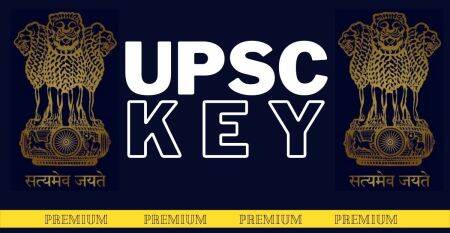 Premium
Premium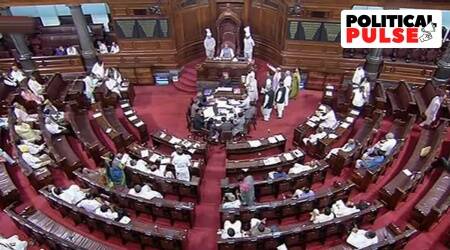 Premium
Premium Premium
Premium Premium
Premium

